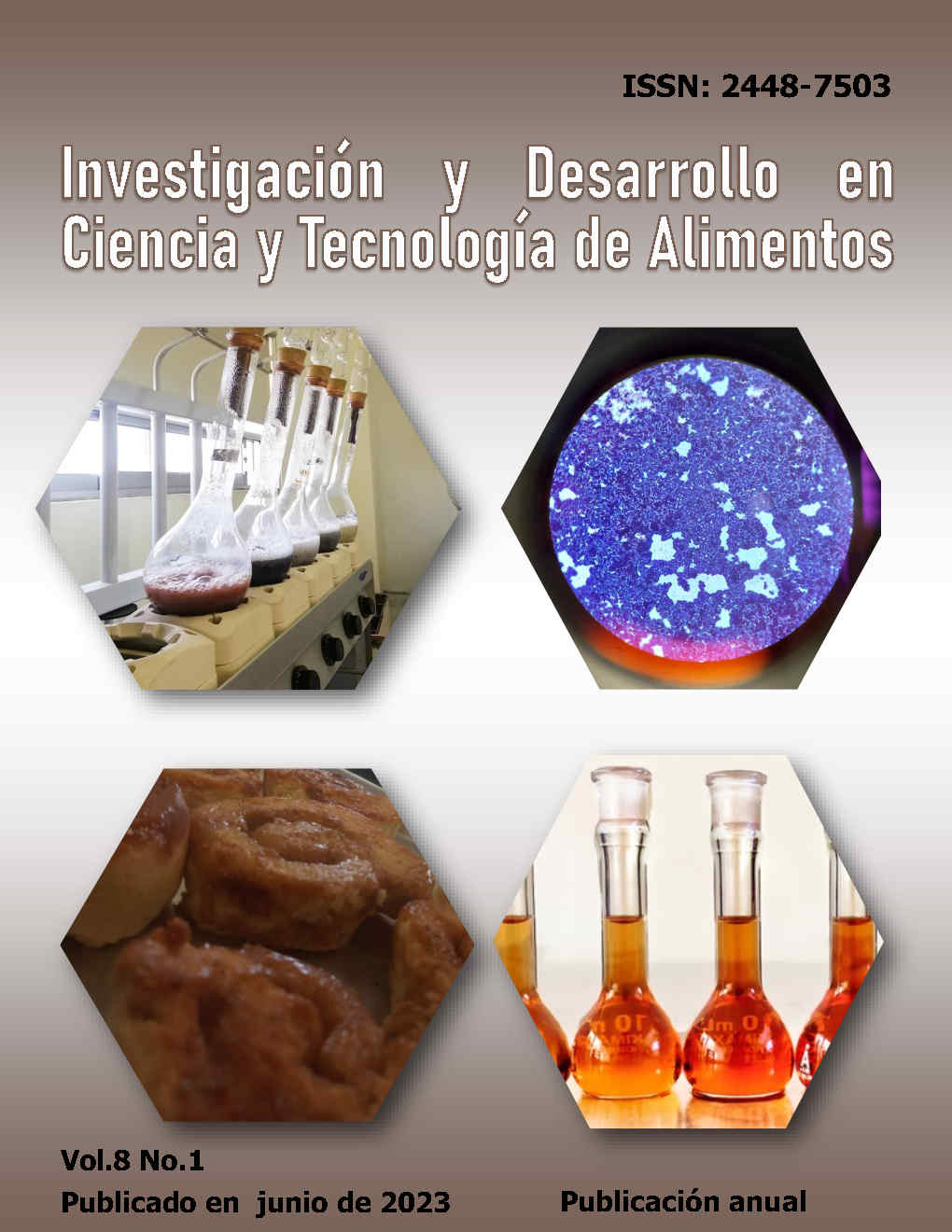Producción de Harina de Camote y su uso en Pan de caja
DOI:
https://doi.org/10.29105/idcyta.v8i1.5Keywords:
Sweet potato flour, sweet potato, analysis, sensory evaluationAbstract
The chemical properties of fresh yellow sweet potato (Ipomoea batatas L.) were determined. The sweet potato tubers were selected washed, peeled, sliced, blanched, drained, dried and ground to obtain flour. Sweet potato flour presented less amount of protein than wheat flour, although it is rich in dietary fiber content, carbohydrates and carotenes, being a good combination for bread. The wheat flour was mixed with sweet potato flour; 100: 0, 90:10, 85:15, 80:20. Evaluations were made of the different mixtures of wheat-sweet potato flours and of the breads obtained with the different mixtures and the sensory evaluation was carried out. Sensory analysis included texture, color, flavor, taste, and general acceptability. The panelists preferred treatment was treatment with up to 15% sweet potato flour. The results revealed that as more sweet potato flour was added to the wheat flour, there were significant changes in functional properties.
Downloads
References
AACC., 1993. Cereal Laboratory Methods. The American Association of Cereal Chemists, Inc. St. Paul, USA
AOAC., 2005. Official Methods of Analysis of AOAC International (14th ed.). Washington, DC, USA: Association of Official Analytical Chemistry. Methods, 950.46, 938.08, 960.39, and 955.04.
Ahmed, M., Akter, S., Jong-Bang E. 2010. Peeling, drying temperatures, and sulphite treatment affect physicochemical properties and nutritional quality of sweet potato flour Food Chemistry 121 112–118 DOI: https://doi.org/10.1016/j.foodchem.2009.12.015
Idolo Ifie., 2011. Sensory and Nutritional Quality Of Madiga produced from composite flour of wheat and sweet potato Pakistan Journal of Nutrition 10 (11): 1004-1007, DOI: https://doi.org/10.3923/pjn.2011.1004.1007
Pérez y Pacheco de Delahaye., 2005. Características químicas, físicas y reológicas de la harina y el almidón nativo aislado de Ipomoea batatas lam acta científica venezolana, 56(1): 9-15,
Renee Vidal A., Zaucedo-ZuñigaA, Ramos-García M., 2018. Propiedades nutrimentales del camote (Ipomoea batatas L.) y sus beneficios en la salud humana Revista Iberoamericana de Tecnología Postcosecha, vol. 19, núm. 2,
Sacón-Vera, E; Bernal-Bailón, I; Dueñas-Rivadeneira, A; Cobeña-Ruíz, G; López-Bello, N., 2016. Reología de mezclas de harinas de camote y trigo para elaborar pan Tecnología Química, vol. XXXVI, núm. 3, pp. 457-467 Universidad de Oriente Santiago de Cuba, Cuba
Utomo, J. S., Cheman, Y. B., Rahman, R. A., & Saad, M. S., 2005. The effect of shape, blanching methods and flour on characteristics of restructured sweet potato stick. International Journal of Food Science and Technology, 43, 1896–1900. DOI: https://doi.org/10.1111/j.1365-2621.2008.01792.x
Van Hal M.2000.Quality of sweet potato flour during processing and storage. Food Rev Int 16:1-37 DOI: https://doi.org/10.1081/FRI-100100280
Downloads
Published
How to Cite
Issue
Section
License
Copyright (c) 2023 Revista Investigación y Desarrollo en Ciencia y Tecnología de Alimentos

This work is licensed under a Creative Commons Attribution 4.0 International License.
Los autores/as que publiquen en esta revista aceptan las siguientes condiciones:
a. Los autores/as conservarán sus derechos de autor y garantizarán a la revista el derecho de primera publicación de su obra, el cual estará simultáneamente sujeto a la Licencia Creative Commons Atribución 4.0 Internacional. que permite a terceros compartir la obra siempre que se indique su autor y su primera publicación esta revista.
b. Los autores/as pueden realizar otros acuerdos contractuales independientes y adicionales para la distribución no exclusiva de la versión del artículo publicado en esta revista (p. ej., incluirlo en un repositorio institucional o publicarlo en un libro) siempre que indiquen claramente que el trabajo se publicó por primera vez en esta revista.
c. Se permite y recomienda a los autores/as a publicar su trabajo en Internet (por ejemplo en páginas institucionales o personales) posterior al proceso de revisión y publicación, ya que puede conducir a intercambios productivos y a una mayor y más rápida difusión del trabajo publicado.





